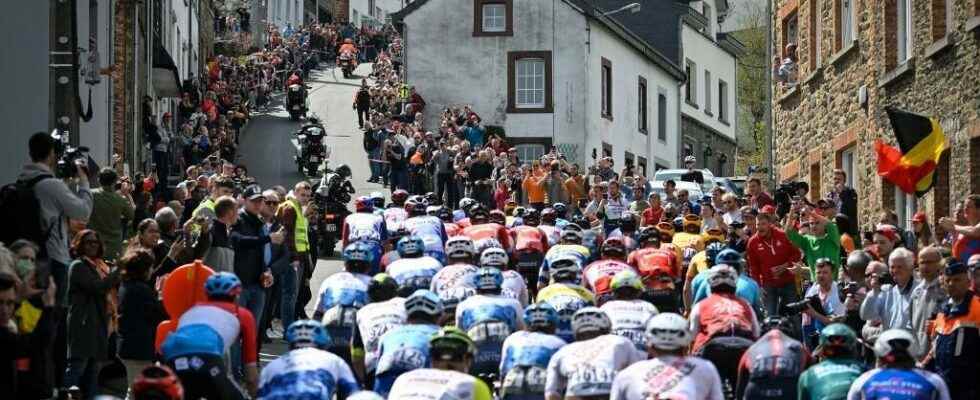A Sunday of suffering. This is what Frenchman Julian Alaphilippe, double world champion, experienced during the classic Liège-Bastogne-Liège on Sunday April 24, after being caught in a violent fall which pushed him into the ravine. Is road cycling more dangerous, with an increasingly homogeneous peloton that drives faster and faster?
French cycling star Julian Alaphilippe fell at the same time as part of the peloton about sixty kilometers from the finish, in the descent leading to the Col du Rosier, at more than 70km / h. Result of the races: fractured scapula, two broken ribs and pneumothorax. At this speed, biting the bitumen does not forgive.
” I saw Julian 5 or 6 meters below and it was an emotional shock “, declared after the arrival his compatriot Romain Bardet, the first to rescue the world champion. A vision of horror that some no longer hesitate to denounce. Alaphilippe, 29, fell three times in two months. He had a spectacular sun during the Strade Bianche in early March in Italy, then fell again, without consequence, in the Brabant Arrow on April 13 in Belgium.
ask questions
Among the other victims of the fall, Frenchman Dorian Godon suffered a fractured left collarbone requiring surgery and a fractured right wrist, according to details from his AG2R Citroën team. Another rider from the Quick-Step team, the Belgian Ilan Van Wilder, was also injured in this fall which forced him to give up the next Tour of Italy (May 6 to 29). “ Ilan underwent surgery to correct the damage to his jaw “, indicated the formation of Patrick Lefevere. Elie Gesbert is suffering from a broken right hip, his French team, Arkea-Samsic, also announced.
The time for reflection seems to be needed once again since this spectacular fall. “ Without blaming anyone, we will have to ask ourselves questions to avoid such tragedies “, confides to RFI Benoît Vaugrenard, former runner and now sports director at Groupama-FDJ. The one who has six participations in the Tour de France thinks that the atria make the race always so dangerous, but not only.
” Today, there are a lot of issues, the team members are getting better and better at placing their riders at the front and we know that things go very fastexplains Benoît Vaugrenard. I know the descent where the fall took place and it is not dangerous in itself. But as it’s a strategic point in the race and the peloton is still quite big, so everyone wants to be well placed. And with the headsets, we put more pressure on the riders to find themselves at the head of the peloton. Like in a one liter bottle of water, you can’t fit two. One hundred runners cannot find themselves at the head of the race either before approaching the Col du Rosier. With a peloton that is going faster and faster, and which remains compact for longer, are the organizers invited to change the strategic points of the race route?
More tension in the peloton
” The teams are very strong and the peloton stays together for a large part of the race. A few years ago, the race settled faster and inevitably, today, there is more tension “, estimates Benoît Vaugrenard, who in no case wants “ overwhelm ” organizers. ” We must gather around a table to find solutions “, he advances.
Victim of a very violent fall on the third stage of the Tour de France in July 2015, William Bonnet had been thrown onto the asphalt and hit by several cyclists. The race had been stopped. Retired since this winter, the 39-year-old Frenchman is not surprised by the repetition of massive falls at more than 70 km / h. In the columns of Parisianhe also insists on the rhythm of the peloton “ higher than before “. “ We have less respect for each other in the new generations. All this increases the risk “, he worries.
“ Sometimes, you have to know how to accept your placement in the race (…) Now, everyone sneaks in the middle of everyone. Some are ready to do anything to pass », Laments Romain Bardet in an interview with The Team.
